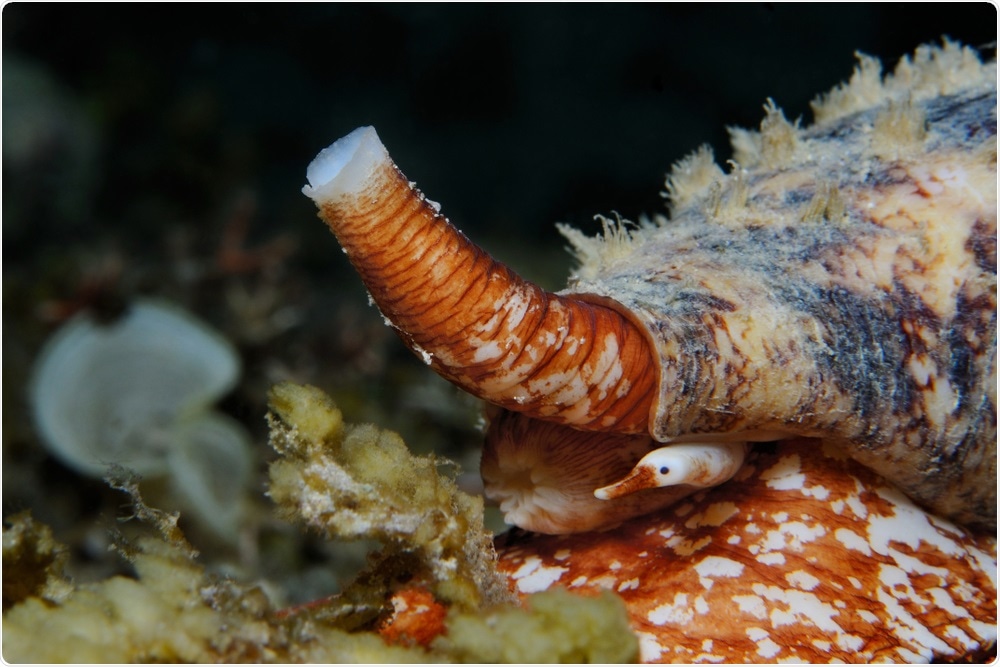Diabetes is a global health issue affecting millions. In 2014, there were 422 million diabetics, compared to 108 million in 1989. The condition can be treated with diet, physical activity, medicines like synthetic insulin injections, and regular screening.
Now, nearly a century after insulin was first discovered, a team of researchers has developed the world's smallest and fully functional version of the hormone using sea snail venom.
The researchers from the United States and Australia report that they have produced a new type of insulin, which combines the potency of human insulin and the fast-acting potential of venom insulin produced by predatory cone snails. The insulin developed could be used to create a safer and effective diabetes treatment.
"We now can create a hybrid version of insulin that works in humans, and that also appears to have many of the positive attributes of cone snail insulin. That's an important step forward in our quest to make diabetes treatment safer and more effective," Dr. Danny Hung-Chieh Chou, a U of U Health assistant professor of biochemistry and one of the study authors, said.
What are Cone Snails?
Cone snails are typically found in tropical waters across the globe. Larger species, such as the Conus geographus, release venom containing fast-acting insulin. The sting of a few of the larger species of tropical cone snails can be severe, occasionally even fatal to humans.
A cone snail, just like other snails, is slow, but with a rapid and potent attack. The predatory creature can detect other species that swim by, deploying a sharp proboscis, or a needle-like protrusion from its mouth. They prey on small bottom-dwelling fish and, when bitten, will experience significant falls in blood sugar, temporarily paralyzing them. The snail then fires a harpoon-like tooth into its prey and swallows it whole.

A highly venomous Geography cone (Conus geographus) with siphon raised up and eyestalk extended. Image Credit: Oksana Golubeva / Shutterstock
What is Insulin?
Insulin is a hormone produced by the pancreas to allow the body to use sugar or glucose from carbohydrates from food for energy or to store for future use. Insulin helps control the body's sugar levels, keeping it from becoming too high (hyperglycemia) or too low (hypoglycemia).
Insulin is responsible for allowing glucose in the blood to enter cells, giving them the energy to function. When there is a lack of sufficient insulin, the glucose remains in the blood, leading to the development of diabetes.
There are three types of diabetes – type 1, type 2, and gestational diabetes. In type 1 diabetes, which is an autoimmune disease, the immune system attacks the pancreas, leading to damage. It is also called insulin-dependent diabetes because the pancreas cannot produce insulin. As a result, the patient needs to inject synthetic insulin.
Type 2 diabetes, or the non-insulin dependent diabetes, occurs when the pancreas can produce insulin, but it is not enough, or there is insulin resistance, wherein the cells do not respond to the hormone. Meanwhile, gestational diabetes happens during pregnancy.
Cone Snail Venom
In the study published in the journal Nature Structural and Molecular Biology, the team found that the venomous cone snail had many biochemical traits in common with human insulin. Moreover, it works faster than the fastest-acting human insulin available today.
Human insulin can take up to half an hour to affect blood glucose levels, while the venom insulin works instantly. The team studied the venom insulin, in the hopes that it can be used in humans. They revealed that it is less potent than human insulin, concluding that the venom alone cannot replace synthetic insulin used today.
To solve the problem, the team used structural biology and medicinal chemistry techniques to isolate four amino acids that help the sea snail insulin to bind to the insulin receptor. They generated a truncated version of a human insulin molecule without the region responsible for clumping.
The team synthesized a combined version of insulin with some of the fast-acting properties of the venom molecule and the potency of human insulin. They tested the new insulin on mice, where they found that the new insulin worked just like real human insulin, but faster.
The scientists called it the "mini-insulin."
"Mini-insulin has tremendous potential. With just a few strategic substitutions, we have generated a potent, fast-acting molecular structure that is the smallest, fully active insulin to date. Because it is so small, it should be easy to synthesize, making it a prime candidate for the development of a new generation of insulin therapeutics," Chou said.
Though the results of the study are promising, it will not be ready for human use just yet. Further studies are needed to establish the efficacy and safety of the new insulin.
Source:
Journal reference:
- Xiong, X., Menting, J., Disotuar, M., Smith, N., Chou, D. et al. (2020). A structurally minimized yet fully active insulin based on cone-snail venom insulin principles. Nature Structural and Molecular Biology. https://www.nature.com/articles/s41594-020-0430-8